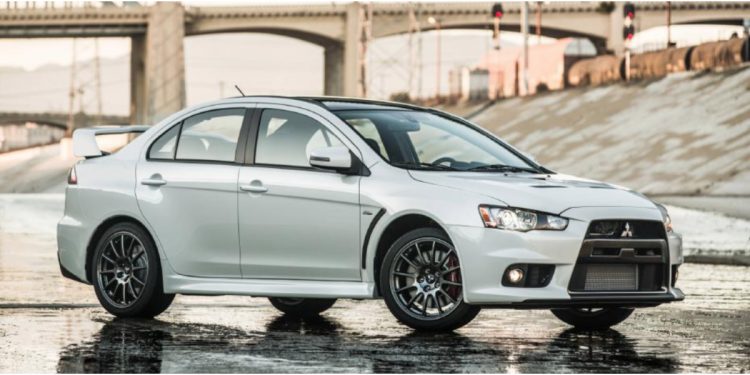The Mitsubishi Lancer Evolution was developed over a span of ten generations, with the first nine built from 1992 through 2006. The Evolution X is the most recent iteration and has been in production since October 2007 as a 2008 vehicle. The 2015 model year was the last year for the Lancer Evo, with the iconic and highly popular JDM car being retired all around the globe. Luckily, though, the automotive aftermarket still offers a wide variety of parts and upgrades for all generations of the popular Mitsubishi Evo.
There’s no doubt that, since its inception, the Mitsubishi Evolution has been a modder’s car. But with so many options available on the aftermarket, it can be hard to figure out where to begin. Not to worry, though, as we’ve compiled the below list naming the top five best mods for your Mitsubishi Evo X. While these are just a starting point for your project, it’s a well-rounded list that covers aesthetics, handling, performance, and tuning. Ultimately, it all depends on what your end goal is and your intentions for your car are. After all, are we ever really “done” modding?
#1 Air Intake Upgrade
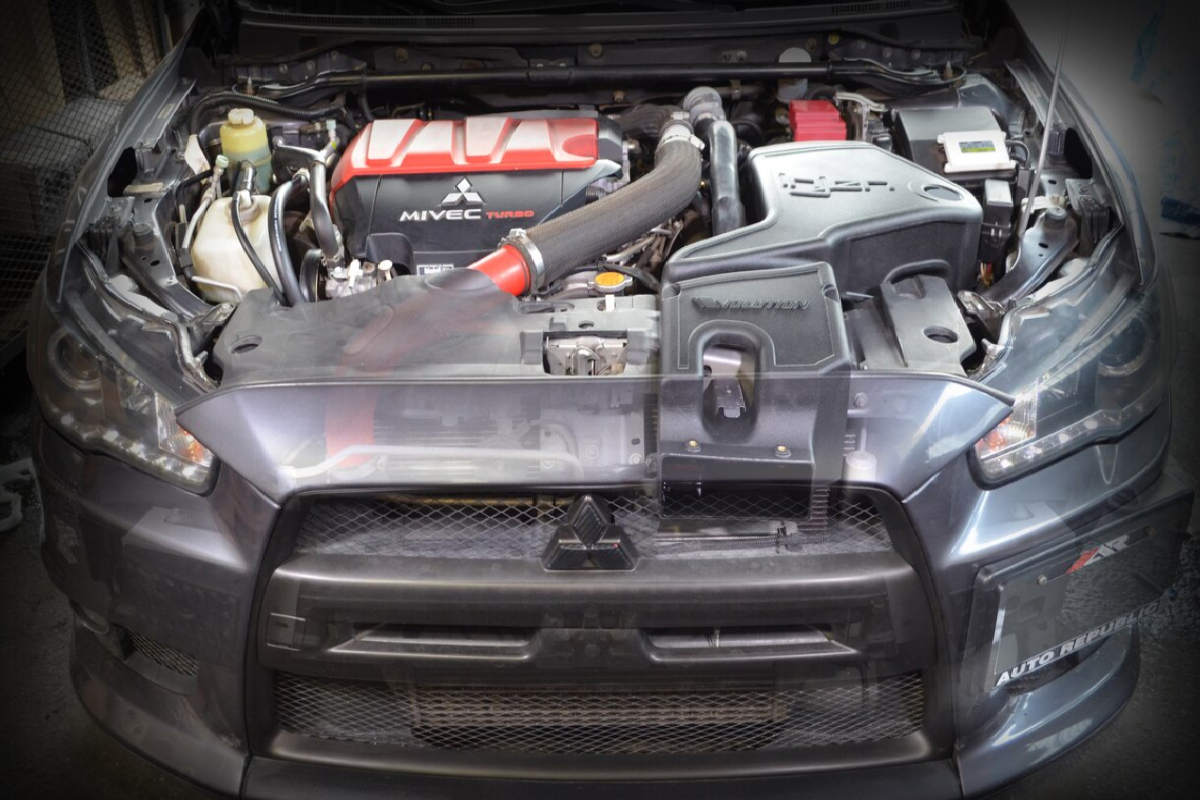
While the Mitsubishi Evo X has a decent standard air intake, it’s always possible to boost its performance and optimize the airflow with very little effort. That’s where an aftermarket intake system comes in. Aftermarket air intake systems are one of the easiest and most affordable ways to increase your Evo’s power output by increasing airflow to the engine. That is why most enthusiasts tend to start with this mod first. It’s practical, functional, and helps dress up the engine bay a bit.
While an upgraded air intake system may not add nearly as much power as other available engine mods, it does provide several benefits that make it a great bang for the buck. These advantages include airflow improvement, reduced air temperatures, better acceleration response, and increased fuel economy. By letting your Evo’s engine breathe better and breathe in cooler air at that, you are simultaneously freeing up power within its system. A less restrictive system along with a larger diameter inlet tube will have your Mitsubishi Evo’s engine respond quicker to throttle inputs and emit an attractive grown under full acceleration.
There are several different types of air intakes on the market; with that said, many drivers opt for a cold air intake. Cold air intakes are specifically designed so that the air filter is located away from the engine to draw in cooler air. That’s because the air drawn from the area right next to the engine is, of course, very hot. Since cooler air is denser than warm air and contains more oxygen, it proves to be a significant factor in creating bigger explosions in the combustion chamber for more power. In fact, a cold air intake can give your Evo X up to 25 added ponies.
Shop All Evo X Air Intakes Here.
#2 Exhaust System Upgrade
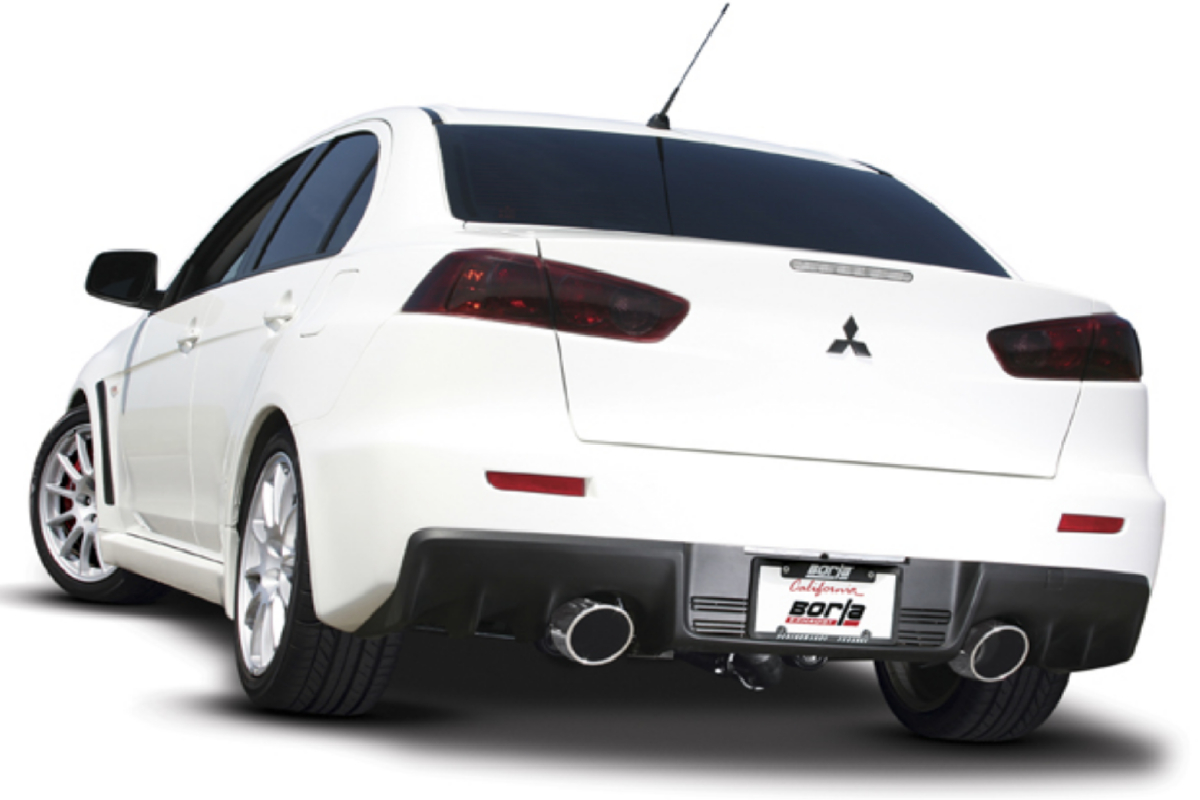
The obvious next step would be to upgrade your factory exhaust system, which is designed to keep noise levels at a low. Chances are if you are modding your car, you want it to look, feel, and sound the part. But with so many different exhaust components and systems out there, it can be difficult to choose one. One option is a turbo-back exhaust, which utilizes a high-flow cat or Evo X test pipe and can alter the emissions and sound of your car. If you are looking to maintain factory emissions and not disrupt your neighbors early in the morning, a turbo-back isn’t the best choice. There are also axle-back exhaust systems and cat-back exhaust systems available on the aftermarket. An axle-back system is just as it implies; it replaces the exhaust pipes from the axle back. A cat-back replaces all of the components from the catalytic converter to the exhaust tip.
The only downside to an axle-back exhaust is that it’s more of a sound mod than anything else, because it merely replaces the mufflers. A catback, on the other hand, is the best way to improve your exhaust flow and get a better exhaust note without adding pricy headers or removing your cats. That being said, a turbo-back exhaust will give you the most rewarding results because it changes the entire stock exhaust system to deliver big power gains. Ultimately, the choice is up to you and what your goal is. There is no right or wrong answer. Do your research and check out some sound clips on the Web before committing to any one system.
#3 ECU Reflash
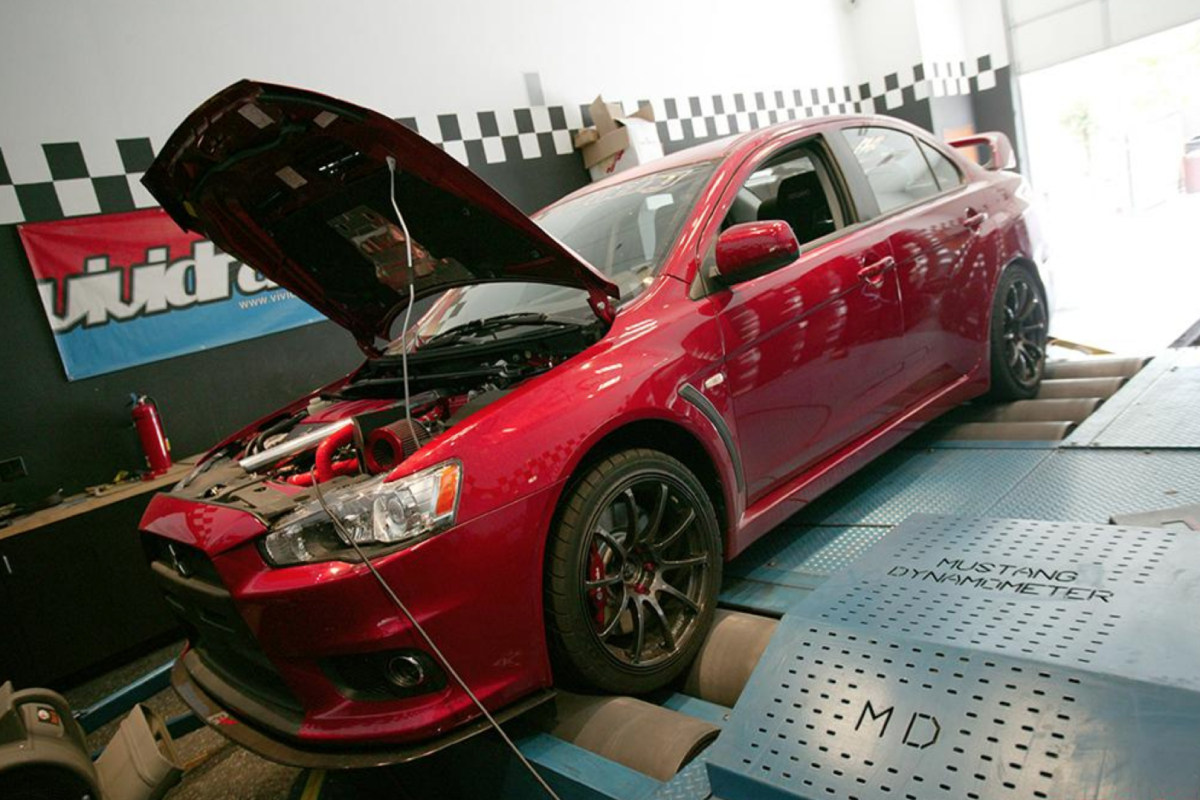
Now that we have covered intakes and exhaust systems, let’s discuss the next step. If you want your Evo X to experience the higher power gains from these mods, you will more than likely need a retune too. After all, no engine modifications are complete without the proper tuning. With tuning, air/fuel ratio, ignition timing, boost, throttle response, torque and rev limiters, and several other parameters can be changed. As you continue to mod your Evo X, it is important to reflash your ECU so that the mods can be accounted for appropriately and no issues arise from stock limitations.
VR Tuned offers an ECU flash for your Mitsubishi Evo X, which will take it from 295 horsepower and 270 pound-feet of torque to 330 horsepower and 325 pound-feet of torque. Our VR tune is available for your standard modded Evo X with parts such as an intercooler, intake pipe, blow-off valve, and exhaust system. With an ECU tune, you will achieve better performance on the engine overall as well as an improvement on the power curve. Your car will experience a much better throttle response all the way to the redline. Your newly flashed Evo will pick up quicker and push harder through the mid- to top-end RPM range, where your current vehicle proves sluggish.
Shop All Evo X ECU Tuning Here.
#4 Suspension Kit Upgrade
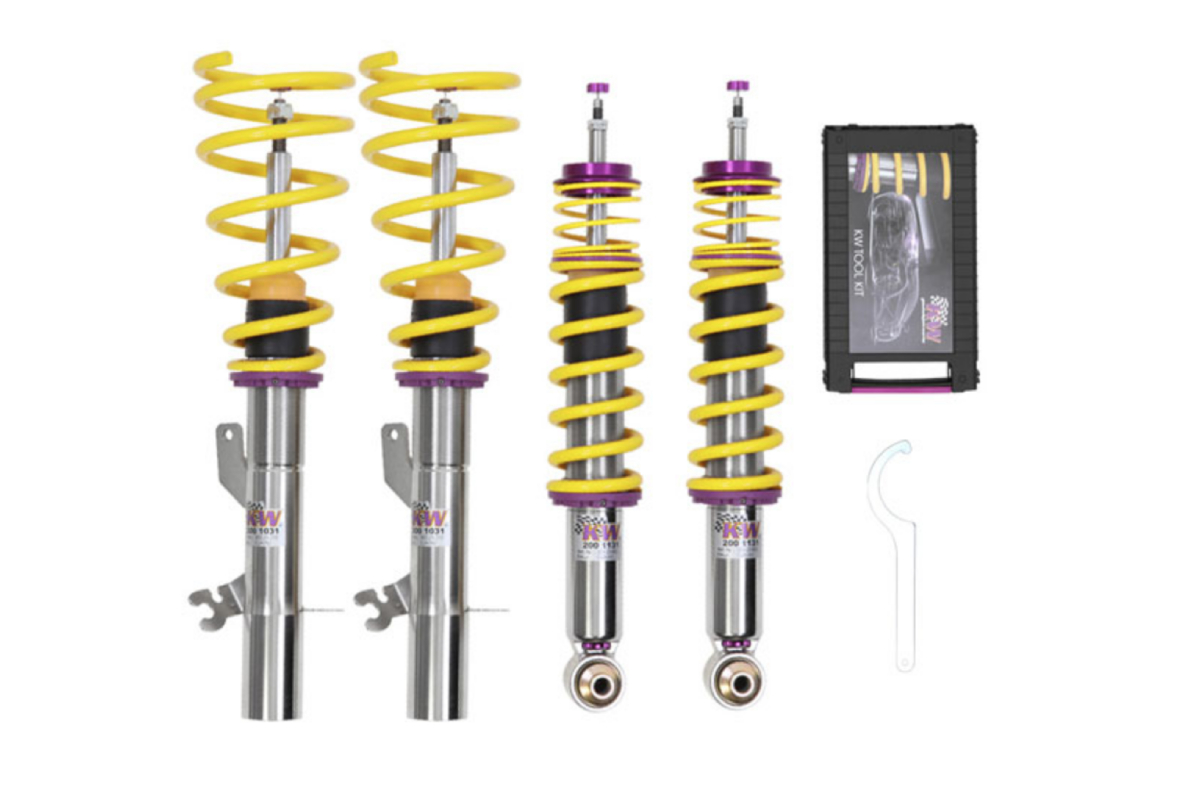
Switching up your Evo X’s suspension will give it a more aggressive look as it grips the road better and allows you to adjust it as needed. The aftermarket houses a plethora of suspension upgrades, including lowering springs, coilovers, and air ride systems. Ultimately, the decision is up to you and one that you should make while keeping important factors in mine like budget, intended vehicle use, pros, cons, and limitations. Let’s first take a look at the lowest cost option, which is lowering springs. A good set of lowering springs will start in the mid-$200 range and can go all the way up to $500. Springs can improve handling characteristics and offer the lowered look you want, but they won’t be the best for heavy track use and are probably not matched with your Evo’s springs and struts.
The next available option is a coilovers setup, which gives you the ability to lower your car significantly while still maintaining a quality ride without going up to an air bag system. Not all coilovers are equal and many of the super cheap options can actually decrease your car’s performance. It is, therefore, important to purchase coilovers from a reputable company, where the product has been chassis, road, and track tested to guarantee optimal performance. There are a number of high-quality coilovers that offer adjustability in ride height, spring preload, and damper, if you are looking for those features. There are also several kits that boast a sporty yet comfortable spring and damper set that is great for both daily and aggressive driving. When done right, coilovers not only improve your car’s stance and appearance but also lowers its center of mass for better handling and flatter cornering ability.
Last but not least, installing an air ride system on your Evo X is a pretty sweet option if your budget allows for it. Prices typically start in the $2,000 range and go up depending on the options and installation costs. Air bags are great if you want a super low car that can also be raised up when necessary. Air suspension is extremely popular among stance crews because it is great for car shows. You can ride at a comfortable height the way there and then slam your car down before the judges make their rounds. The adjustable modes also prove extremely beneficial when entering parking garages and going over speed bumps.
Shop All Evo X Suspension Parts Here.
#5 Carbon Fiber Aero Parts
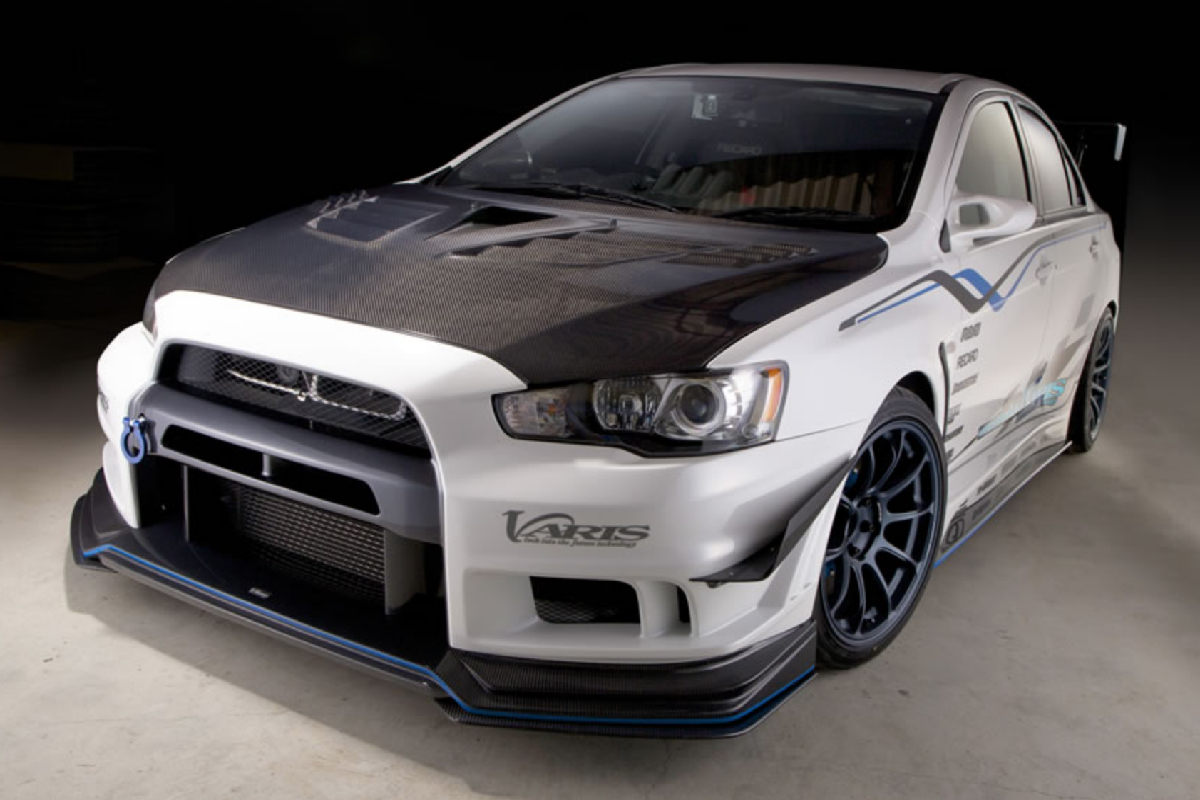
Adding some carbon fiber goodies to your Evo X will not only improve its exterior appearance but also improve its aerodynamics. Whether you want to install a full (wide) body kit or just a spoiler here or there, the aftermarket offers a slew of options for you to get the look you want along with the reduced weight benefits. After all, getting rid of weight is a go-to method for improving any vehicle’s performance without having to tweak the engine. Replacing the stock parts with quality carbon fiber pieces or ground effects kits, where possible, can deliver considerable weight savings that translate to improved aerodynamics and, thus, better performance overall.
Carbon fiber, particularly, is a popular material because of its lightweight and equally strong properties. Other benefits of carbon fiber include its distinct appearance, high stiffness, high-heat tolerance levels, and corrosion-resistance properties. Apart from the distinct appearance, excellent strength, high stiffness, corrosion resistance properties, and high heat tolerance properties- this material is packed with tons of other benefits too.
Another important trait of carbon fiber is that it can be molded into virtually any shape, making it versatile for use in body parts, engine components, vehicle wraps, and more. There are several different options out there that can take your Evo X’s appearance to the next level, including hoods, front lips, canards, rear spoilers, wings, side skirts, fenders, and complete widebody kits. While many of the aerodynamic benefits won’t necessarily be felt in everyday driving, they do prove beneficial on the track, when cornering, and at higher speeds.


